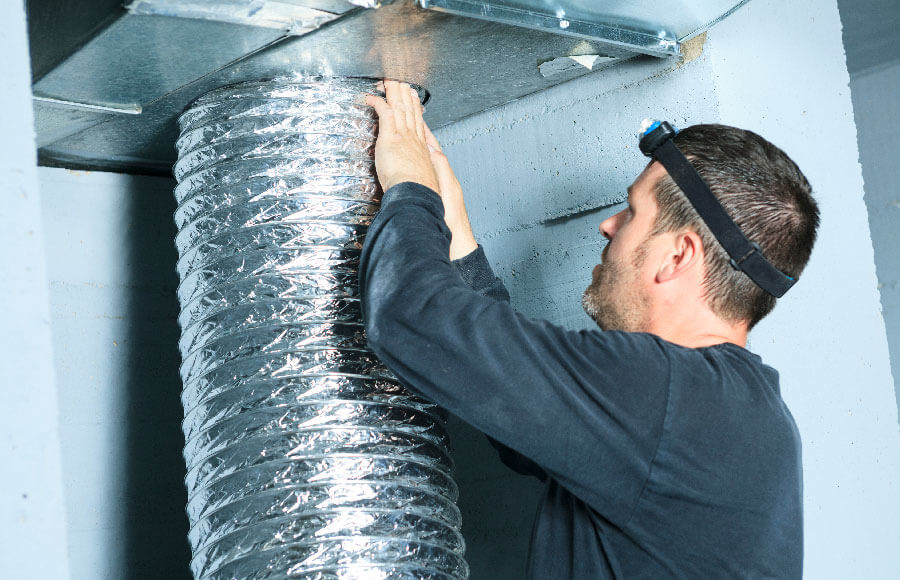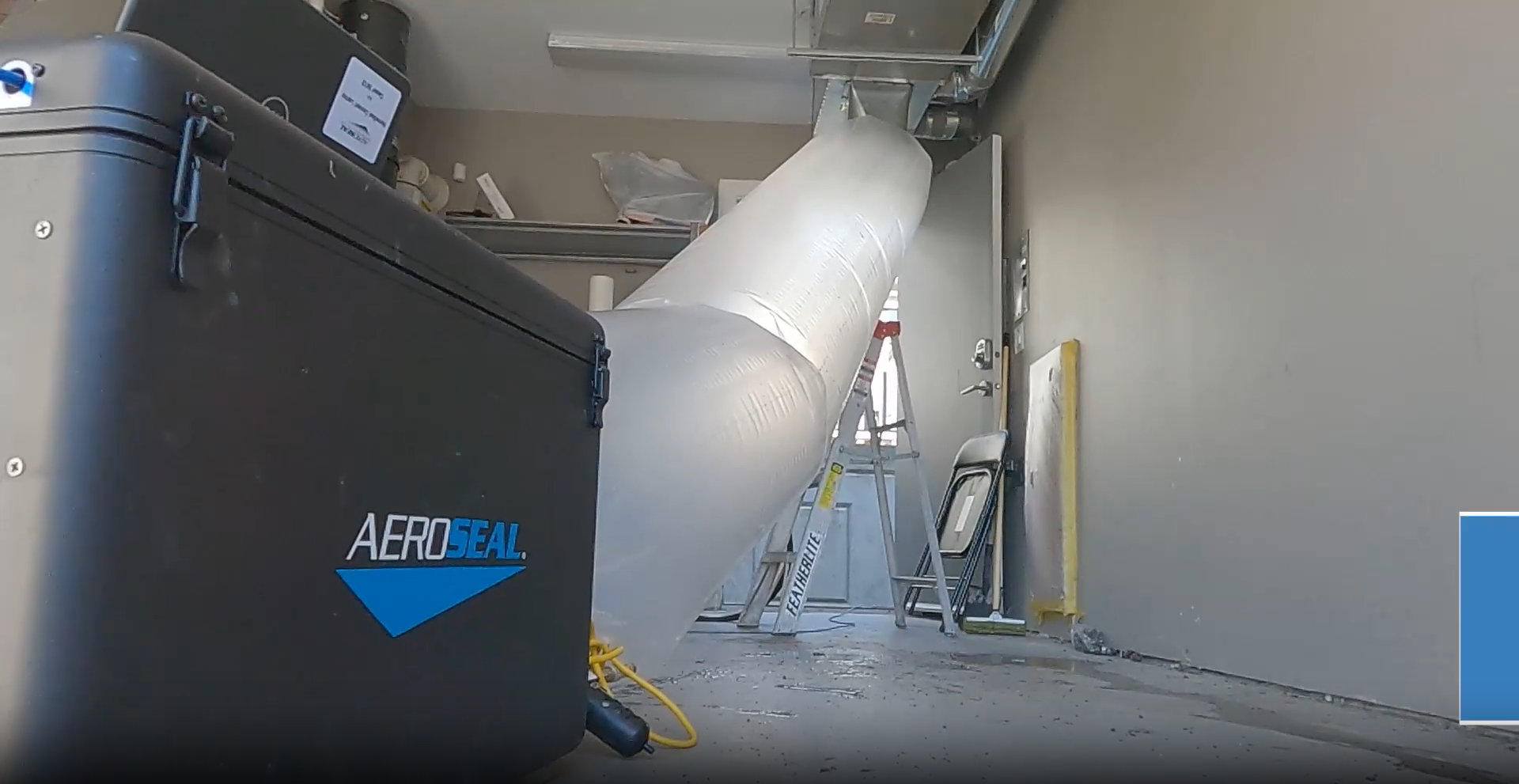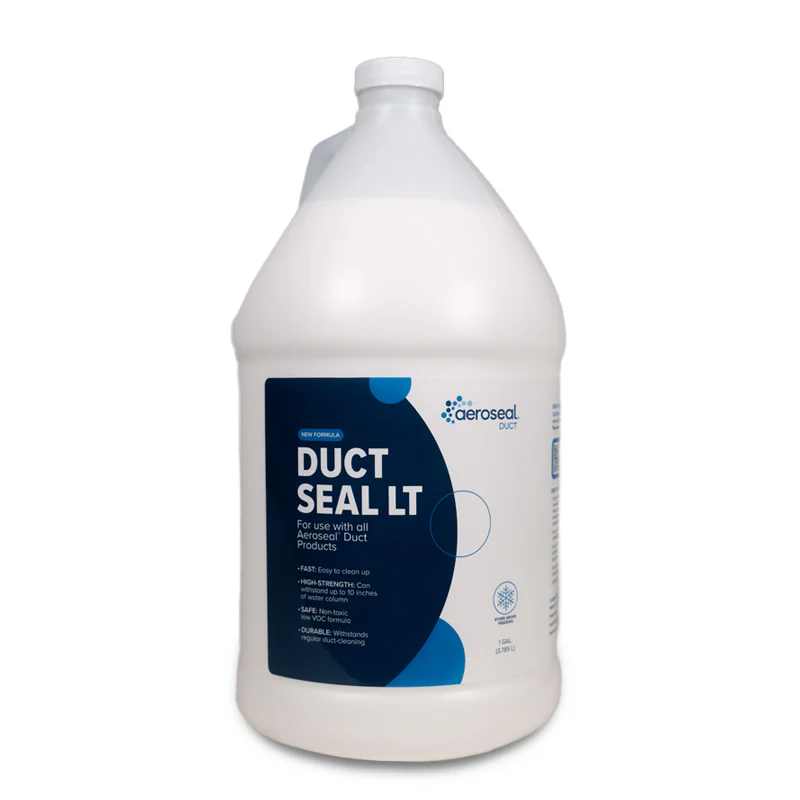The Ultimate Guide How Does Aeroseal Work?

High energy bills and uneven room temperatures are common problems for homeowners. These issues often stem from leaky ductwork, which causes your HVAC system to work harder while wasting energy.
Aeroseal is an innovative duct-sealing technology designed to address these problems. Sealing leaks from the inside improves energy efficiency, enhances indoor air quality, and makes your home more comfortable.
In this article, we’ll explore Aeroseal’s advanced process in detail and answer common questions about its safety, durability, and effectiveness.
Key Takeaways
- Aeroseal reduces duct leakage by up to 90%, saving homeowners up to 30% on energy costs.
- The process uses a non-toxic, low-VOC sealant that addresses leaks inside the duct system.
- Aeroseal is certified by UL and OSHA and has been proven to last over 40 years.
- Typical costs range from $1,500 to $2,500 per system, offering both time and cost savings compared to traditional methods.

What is Aeroseal?
Aeroseal is an advanced duct-sealing technology that addresses leaks in your HVAC system. It uses a water-based sealant made from vinyl acetate polymer to fill gaps in your ductwork.
Unlike traditional methods of duct sealing like tape or mastic, Aeroseal works from the inside out. A fog of microscopic particles is injected into your ducts, where it bonds to leaks and seals them without requiring invasive repairs.
This method has been used in over 200,000 homes worldwide and is endorsed by Underwriters Laboratories (UL) and Lawrence Berkeley National Laboratory. Its long-lasting performance is backed by a 10-year warranty, and testing shows a lifespan of over 40 years.
The Aeroseal Process: A Step-by-Step Breakdown
Aeroseal’s success lies in its innovative process. Here’s how it works:
Step 1: Preparing the Duct System
The first step in the Aeroseal process involves a thorough inspection of your HVAC system:
- Locating Leaks: Technicians use advanced diagnostic tools to measure airflow and pinpoint the exact locations of leaks. This step establishes a baseline for how much air your system is losing.
- Sealing HVAC Components: All vents, registers, and HVAC components, such as the furnace or air handler, are temporarily blocked to ensure the sealant flows only into the ductwork.
- Access Point Creation: A small entry point is created in the duct system to inject the Aeroseal fog.
These steps ensure that the sealant reaches every part of the duct system while protecting sensitive HVAC equipment from damage.
Step 2: Injecting the Sealant
Once the system is prepped, the sealing process begins:
- Heating and Atomizing the Sealant: The Aeroseal solution is heated and transformed into a dry fog made of particles as small as 4-10 microns.
- Pressurized Injection: The fog is injected into the duct system under pressure. Airflow naturally carries the particles to the leaks, where they accumulate.
- Targeting Leaks: As the particles exit through gaps, they stick to the edges of the leaks and bond together, sealing the cracks layer by layer.
This process continues until all leaks are closed. The sealant addresses hidden or hard-to-reach leaks because it targets every point where air escapes.
Step 3: Monitoring and Verifying Results
After the sealant is applied, technicians perform a final verification to ensure the process is successful:
- Leakage Reduction Measurement: Technicians use diagnostic tools to measure how much air leakage has been reduced, often achieving up to a 90% improvement.
- System Testing: The HVAC system is tested to confirm improved airflow and efficiency.
- Homeowner Report: A detailed report showing the before-and-after results, including energy savings and airflow improvements, is provided to homeowners.
This verification ensures that homeowners can immediately see the benefits of the process.

Duct Sealant Specifications PDF
What Makes Aeroseal Sealant Unique?
The Aeroseal sealant is specifically designed for safety, durability, and effectiveness:
- Composition: Made from water (50–70%), vinyl acetate polymer (20–40%), amorphous silica (1–5%), and propylene glycol (1–5%), the sealant contains materials commonly found in household products.
- Low VOCs: The sealant emits minimal volatile organic compounds (VOCs), making it safe for use in residential settings.
- Flexible and Durable: The sealant’s thermoplastic properties allow it to adapt to the natural movement of ductwork without cracking or deteriorating over time.
Homeowners may notice a mild odor during application, but it dissipates within hours. Air scrubbers often remove any remaining particles, ensuring indoor air quality remains unaffected.
Benefits of Aeroseal
The benefits of Aeroseal go beyond fixing leaky ducts. It enhances HVAC performance, improves indoor comfort, and provides long-term savings. By effectively targeting leaks, Aeroseal improves energy efficiency, indoor air quality, and the lifespan of your duct system.
Enhanced HVAC Efficiency
Sealing leaks improves airflow and reduces the strain on HVAC systems, lowering energy usage by up to 30%. This translates to lower utility bills and less wear on the system over time.
Improved Indoor Air Quality
By preventing outdoor pollutants like black carbon and allergens from entering through leaks, Aeroseal creates a cleaner, healthier environment. It also reduces dust and debris circulation inside your home, enhancing overall air quality.
Prolonged Ductwork Lifespan
Aeroseal minimizes wear and tear by reducing airflow turbulence and preventing contaminants from accumulating in the duct system. This extends the life of the ductwork and reduces the need for frequent repairs or replacements.
Questions About Aeroseal
How Long Does the Aeroseal Process Take?
The entire process usually takes 4–8 hours, depending on the size of the home and the extent of the leaks.
Is the Sealant Safe for My Home?
Yes. The Aeroseal sealant is non-toxic, UL-approved, and contains materials commonly used in everyday products.
Do I Need to Clean My Ducts Before Aeroseal?
If your ducts contain excessive dirt or debris, air duct cleaning is typically recommended before starting the Aeroseal process. Cleaning ensures that the sealant can adhere properly to the duct surfaces, providing an effective and long-lasting seal.
Can Aeroseal Be Used on All Duct Types?
Aeroseal works on most duct materials, including sheet metal, flex ducts, and fiberboard. However, conditions like severely damaged ducts may require repairs before sealing.
What Happens if a Leak is Too Large for Aeroseal?
Aeroseal can seal gaps up to 5/8 inches wide. More significant issues may require manual repairs before the Aeroseal process can begin.
Conclusion
Aeroseal offers a revolutionary solution to duct leakage, improving HVAC efficiency, lowering energy bills, and enhancing indoor comfort. Its advanced process, from preparation to sealing, ensures lasting results backed by rigorous testing and real-world success.
For homeowners seeking a safe and effective way to optimize their HVAC systems, Aeroseal is the clear choice.


